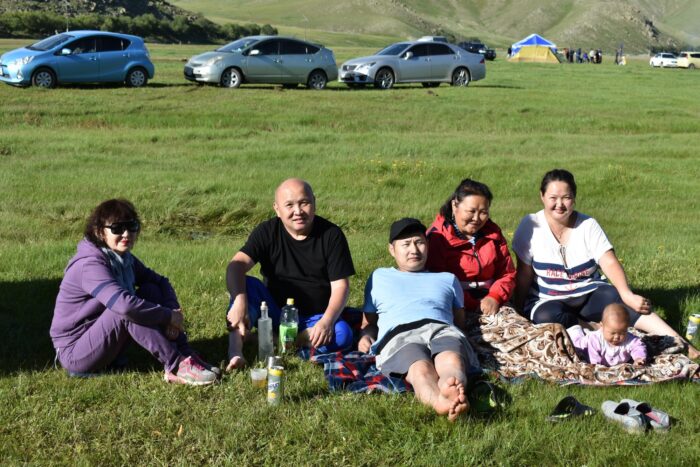- TOP
Receipts of the World
NUMBER
12
TITLE
Receipts of the World

A week’s worth of household food from around the world.
A glimpse into the true lives of people, beyond just data and numbers.
This exhibit, created with the support of the Japanese International Cooperation Agency (JICA), shows real families from around the world and what and how much they are eating in one week as well as the types of food and the amounts on the receipts.
Some reflect local food cultures, while some may seem to be in stark contrast to a typical outsider’s preconceived ideas. JICA provides support for food security and nutritional improvement mostly to developing countries.
Here are the receipts from other countries not covered in the exhibit.
Sudan

| Name | Inas Ramli |
| City | Khartoum |
| Number of family members | 6 |
Legumes are commonly eaten in Sudan, and Inas’ meals feature a diverse selection, including broad beans, lentils, white beans, and peanuts.
‟Fool” made from broad beans is especially beloved by all Sudanese, regardless of social status.
Kyrgyz Republic

| Name | Aijan Makeshova |
| City | Bishkek |
| Number of family members | 6 |
In Kyrgyzstan, where wheat is the staple food and potatoes are among the most consumed side dishes in the world.
Aijan, a Japanese language teacher, treated Japanese interns with her signature rice dishes.
Mongolia

| Name | Puntsagsuren Altansukh |
| City | Ulaanbaatar |
| Number of family members | 3 |
Mongolia’s harsh winters make it difficult to grow vegetables.
Anda, who was raised in a nomadic family,still primarily eats meat and dairy products even after leaving home.
However, she makes an effort to include as many vegetables as possible in her diet.
Mexico

| Name | Alejandro RIOS |
| City | Mexico City |
| Number of family members | 2 |
Alejandro is a talented cook and often prepares meals for his colleagues.
Mexico is known for its corn flour tortillas, edible cactus, and a diet with a high consumption of animal proteins.
Mozambique

| Name | Edson Marina |
| City | Maputo |
| Number of family members | 5 |
‟Shima” is a traditional dish from Mozambique made by mixing and kneading corn flour with hot water.
Due to Mozambique’s history as a former Portuguese colony, Marina’s meals also blend Portuguese seasonings.
Brazil

| Name | Nair Yasuko Kihara Kokubu |
| City | Brasilia – Distrito Federal |
| Number of family members | 4 |
Nair enjoys foods that are familiar in Japan, but in general, Brazil is known for its high meat consumption.
Additionally, tapioca dishes made from
Bhutan

| Name | Jamyang Phuntso |
| City | Trashigang Dzongkhag |
| Number of family members | 4 |
In modern Bhutan,a meal isn’t complete without rice.
Chili peppers are essential to their cuisine and are consumed more as a vegetable than a spice, as reflected in Jamyang’s household meals.
Ukraine

| Name | Olga |
| City | Kyiv |
| Number of family members | 2 |
Olga lives in the war-torn capital, Kyiv.
Ukraine is blessed with fertile soil and a variety of vegetables, with dairy products being equally essential.
Sour cream is often added to soups, such as borscht.
You can also see receipts from other countries not covered in the exhibit.
Philippines

| Name | Lara Javier |
| City | Philippines |
| Number of family members | 4 |
Rice is the staple food in the Philippines, one of the most rice-consuming countries in the world. We can see from Lala’s meal that she also consumes a lot of rice. In the Philippines, restaurants often offer an “unlimited rice” option that allows customers to have as many helpings of rice as they want. Combos with rice being the main menu item and fried noodles being a side dish are also quite common. Foods that are frequently served with rice include canned foods, such as corned beef or sardines, and processed meats such as sausages. In general, rice and side dishes are served on large plates, from which people take portions to put on their own plates.
Uzbekistan

| Name | Hasanov Odilhon |
| City | Uzbekistan |
| Number of family members | 6 |
In ancient times, Uzbekistan was a key stop on the Silk Road, which enriched the local food culture and brought people from diverse backgrounds together. Uzbek cuisine has also had an impact on its neighboring countries. Wheat is the staple ingredient in Uzbekistan, which they use to make bread, noodles, and dough. The second most consumed food is rice. In particular, the ritual food “plov” is eaten in many areas along the Silk Road. Recently, it has been said that people have started eating more plov since more rice is being consumed due to heightened health consciousness. Mr. Hasanov loves plov and always includes it in his daily diet.
Bolivia

| Name | Ramiro FLORES |
| City | Bolivia |
| Number of family members | 4 |
The regions of Bolivia vary widely from tropical flatlands to cold highlands and offer many types of fruits and vegetables which are reportedly consumed in great amounts. It is perhaps because of the lack of religious food restrictions in Bolivia that Mr. Ramiro’s diet is so diverse. Sopa de mani (peanut soup), which features an exquisite and impactful pairing of creamy raw peanut flavor and meat, is a uniquely Bolivian dish loved not just by Bolivians but by Japanese residents as well. However, you will not find seafood in Mr. Ramiro’s diet, perhaps because Bolivia is a landlocked country.
Egypt

| Name | Sara Nasr |
| City | Egypt |
| Number of family members | 5 |
Egypt is well known for the image of its pyramids rising out of the desert sand, but its land is actually so fertile and produces such a wide range of vegetables and fruit that it is known as “the gift of the Nile.” Fish farming, which uses water from the Nile, is also thriving. Egypt consumes a large amount of its staple foods, wheat and rice, and families enjoy various other dishes to supplement the wheat and rice, which almost always include fresh vegetables and pickles. Egyptian cuisine is also characterized by its use of various beans, mostly broad beans, lentils, and chickpeas. White kidney beans are Sarah’s favorite.
Collaboration
Collaboration by Japanese International Cooperation Agency
Audio guide narrator:SHOJI Mai



